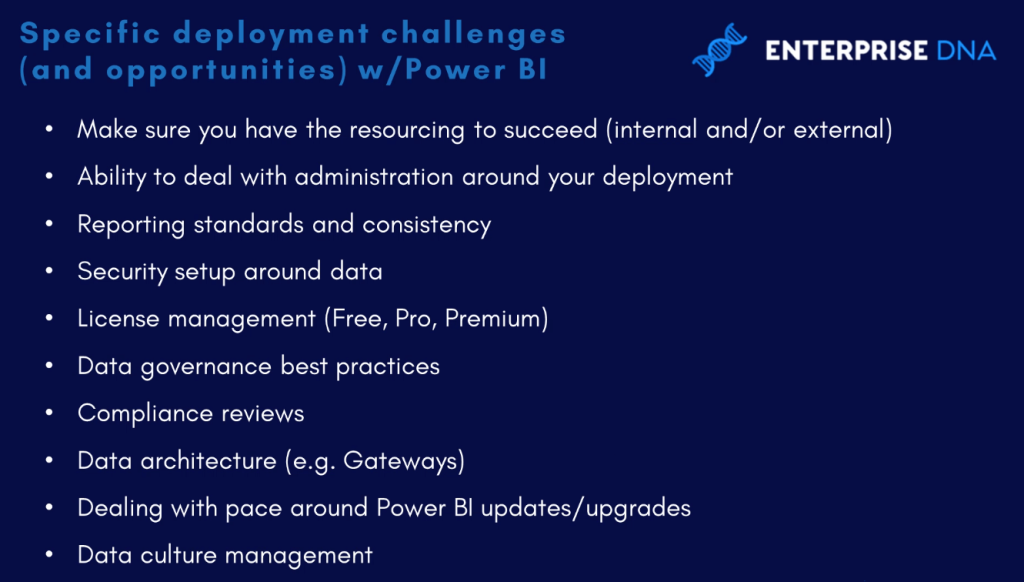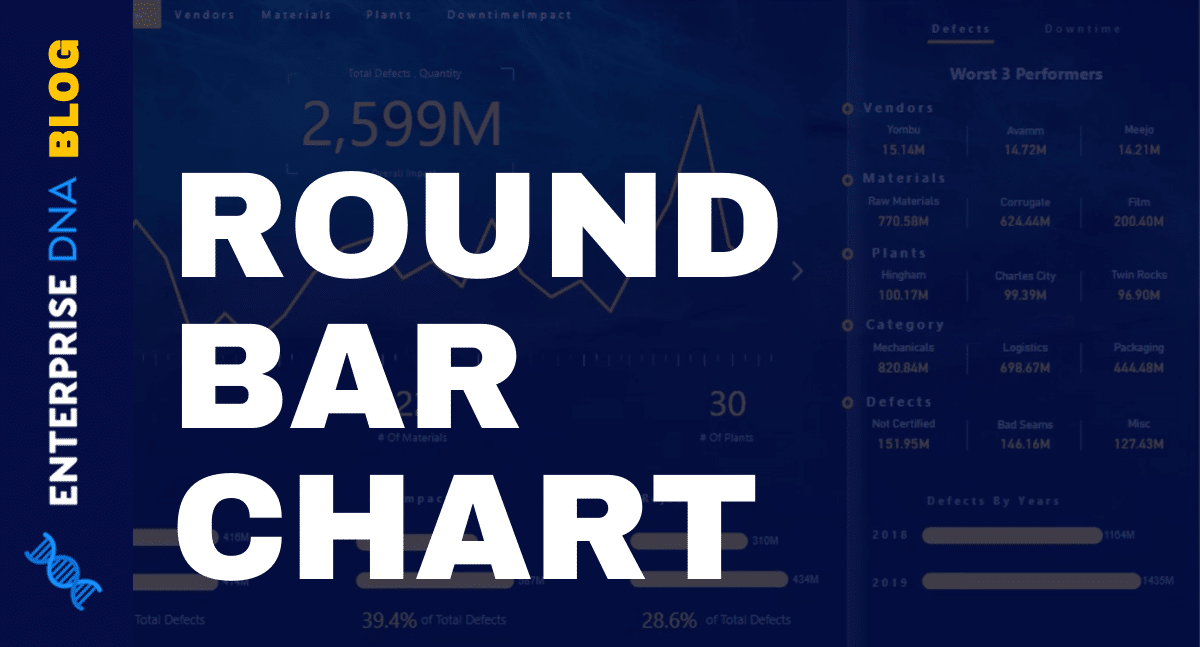Power BI is a powerful data visualization tool that allows businesses to easily create and share interactive reports and dashboards. However, deploying Power BI can come with its own set of challenges. In this blog post, we will explore some of the common challenges that businesses may face when deploying Power BI, as well as the opportunities that come with a successful deployment.
From team readiness to data culture, we will discuss the key considerations for a successful Power BI deployment. Additionally, we will also take a look at some of the benefits that businesses can reap from a well-implemented Power BI deployment, such as improved decision-making, increased efficiency, and better data insights.
Deployment Challenges in Power BI
The success of a Power BI deployment depends on careful planning, clear communication, and a thorough understanding of the organization’s specific needs and capabilities.
The following points are specific deployment challenges that you need to overcome during Power BI implementation:

Challenge #1: Team Readiness
Team readiness means that you have the resources and capabilities to deploy Power BI successfully.
However, not all members of the team have the analytical capability and data literacy to use Power BI immediately. You need to set aside time and a budget for training. You need to bring additional resources into the organization.
Power BI deployment will also often require administrative support. This is crucial in the security and governance of your reports.
Challenge #2: Power BI Reporting Standards & Consistency
It’s important to ensure that each Power BI user is following specific standards when creating report designs, layouts, navigation experiences, colors, and styles. This builds consistency within the organization.
In addition, it’s important to review and monitor the reports and dashboards regularly to ensure that they are consistent with the guidelines and standards. This can help to identify and correct any issues that may arise, as well as maintain reporting consistency.
Challenge #3: Security Management
Security management entails securing your data both internally and externally.
Make sure that the data is relevant and made available to the right users. Don’t give access to those who don’t need it. Also, you need to make sure there’s good provisioning on your internal data pipelines.
Moreover, be careful about exposing your data to outsiders. Ensure proper data sharing and distribution within your organization by practicing good security.
Challenge #4: Power BI License Management
You need to make sure that each individual or team in your organization is given the appropriate Power BI license.
The Power BI software has three licenses: free, pro, and premium.
Properly assigning Power BI licenses in an organization is important for several reasons:
- Cost-effective: Power BI licenses have different levels of functionality and pricing. Assigning the correct license to each user ensures that the organization is only paying for the features and functionality that are actually needed.
- User experience: Assigning the correct license to each user ensures that they have the necessary functionality and access to create, view and share the reports they need.
- Auditing and tracking: Properly assigning licenses also enables organizations to track and monitor the usage of the licenses, and helps with compliance and security audits.
Enterprise DNA has plenty of resources around Power BI licensing such as the Power BI Licensing Planner.
Challenge #5: Data Governance
Data governance refers to the overall management and oversight of an organization’s data assets. It involves the development and implementation of policies, procedures, and standards for the collection, storage, use, and dissemination of data.
You need to make sure that your data is designed and administered correctly. You also need to set automatic refresh schedules so the data in reports will always be up to date.
Data governance also means having a strong catalog and documentation around all the relevant data sources in an organization. Report certification, for example, can improve data governance. It ensures that only certified reports are being distributed internally and externally.
Challenge #6: Compliance Reviews
Compliance reviews are similar to getting an audit done by a consulting firm. There needs to be a team assigned to review the data security and information within the firm.
The insights generated internally need to be correct and that these are properly distributed to key stakeholders within the organization.
Challenge #7: Data Architecture
There’s also a range of different decisions around architecture that you need to make.
One of these is deciding whether to work via cloud databases or not. You need to weigh the pros and cons and determine which one is most suitable to use within your organization.
There are different ways to build data models in Power BI. You can build them from scratch on the Power BI Desktop or use data flows and Power BI data sets.
Another thing to consider is gateways. Make sure that your gateways are set up correctly, especially when working on data located within an internal service.
Challenge #8: Power BI Updates/Upgrades
Over the years, Power BI has rapidly released new features and is continuously upgrading its system. Make sure that you and your organization are able to follow through.
This is similar to the concept of taking constant action.
You need to develop the flexibility to quickly adapt to changes made in the Power BI platform.
You need to provide constant education and training to Power BI users within your organization. Constantly update strategies and optimize governance around the new features.
Challenge #9: Data Culture
A data culture in Power BI refers to the values, beliefs, and practices that guide data collection, management, and analysis within an organization. A strong data culture ensures that data is accurate, reliable, and accessible to those who need it and that it is used to inform decision-making and drive business outcomes.
Having a good data culture requires inclusivity. Make sure that everyone is included and involved in the movement.
A data culture requires inclusivity to be effective. Inclusivity means that all members of an organization, regardless of their role or level of expertise, are encouraged to participate in data-related activities and to use data to make informed decisions. This not only includes data analysts and data scientists, but also business leaders, managers, and other employees who may not have a background in data analysis.
***** Related Links *****
Deployment Strategies In Power BI: An Overview
Power BI Tools For Planning & Deployment
Power BI App: Changing The Paradigm In Data Management & Transformation
Conclusion
The nine challenges outlined in this blog are key considerations when managing and implementing Power BI deployment in an organization. To address them, the organization must set clear plans and goals, train and support users, establish strong data governance processes, and involve stakeholders in the implementation process.
Moreover, these challenges can become opportunities in the long run. By embracing change and flexibility, leveraging expertise, focusing on value, and continuously improving, organizations can turn challenges into opportunities for growth and improvement.
All the best,
Sam McKay








